Ingredients
Lard | 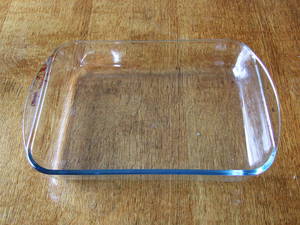 A glass tray of water A glass tray of water | ||
A pair of scissors | A bowl of hot water and a cup |
Instructions
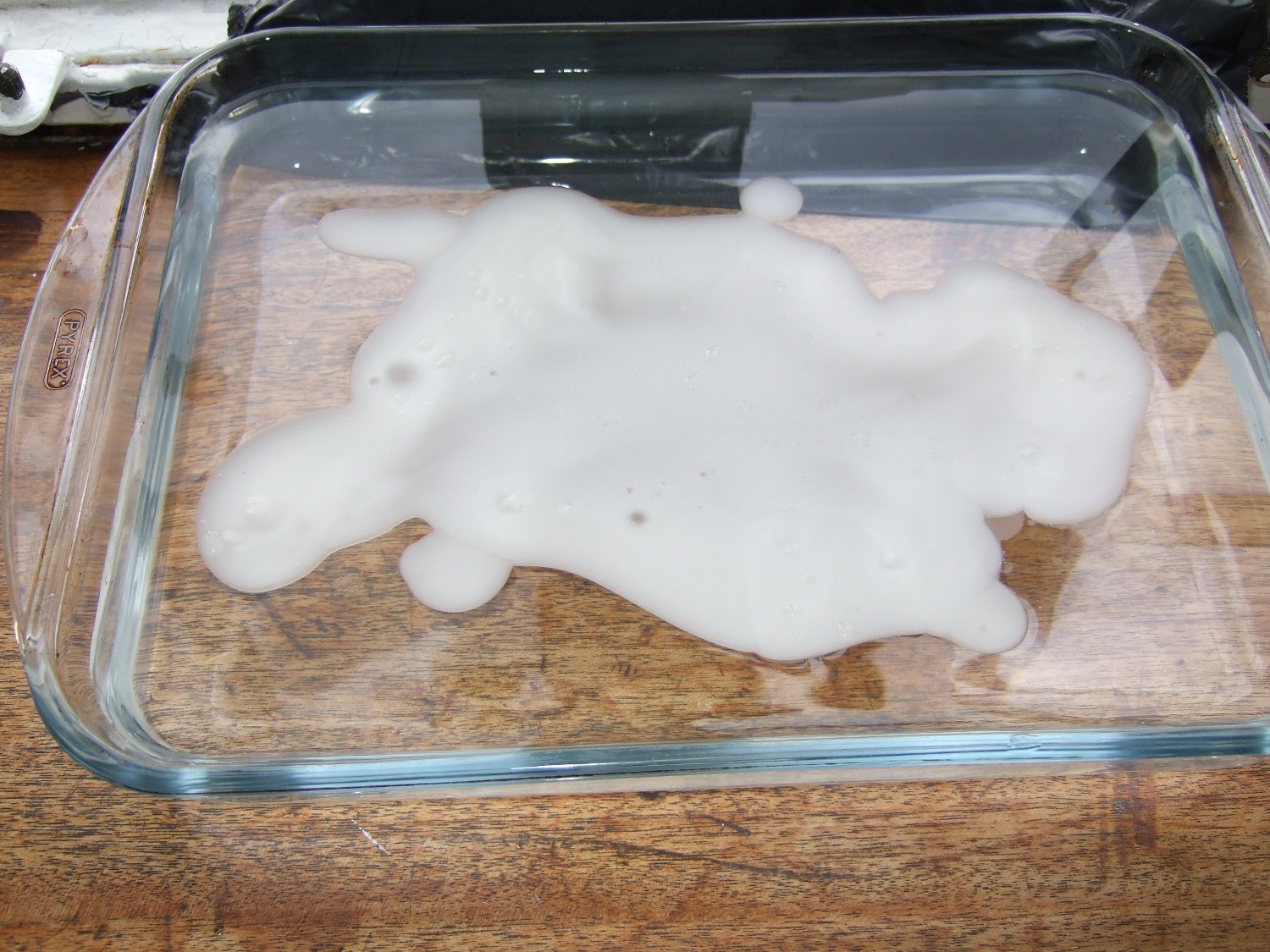 |
| Lard plate 2-3mm thick floating on water |
Melt about 100g of lard, by placing it in a cup and putting the cup in a bowl of hot water.
Fill a large, ideally flat and transparent, container with water.
Pour the lard over the surface to form a 2-3mm thick plate on the surface.
Wait until it congeals and then cut it into two plates with a pair of scissors.
Push the two plates together and make them crumple up to make lard mountains (they may need a little assistance).
Look at the mountains you have made, above and below the water.
Result
When the two plates collide they fold (possibly with a little help) to form mountains.
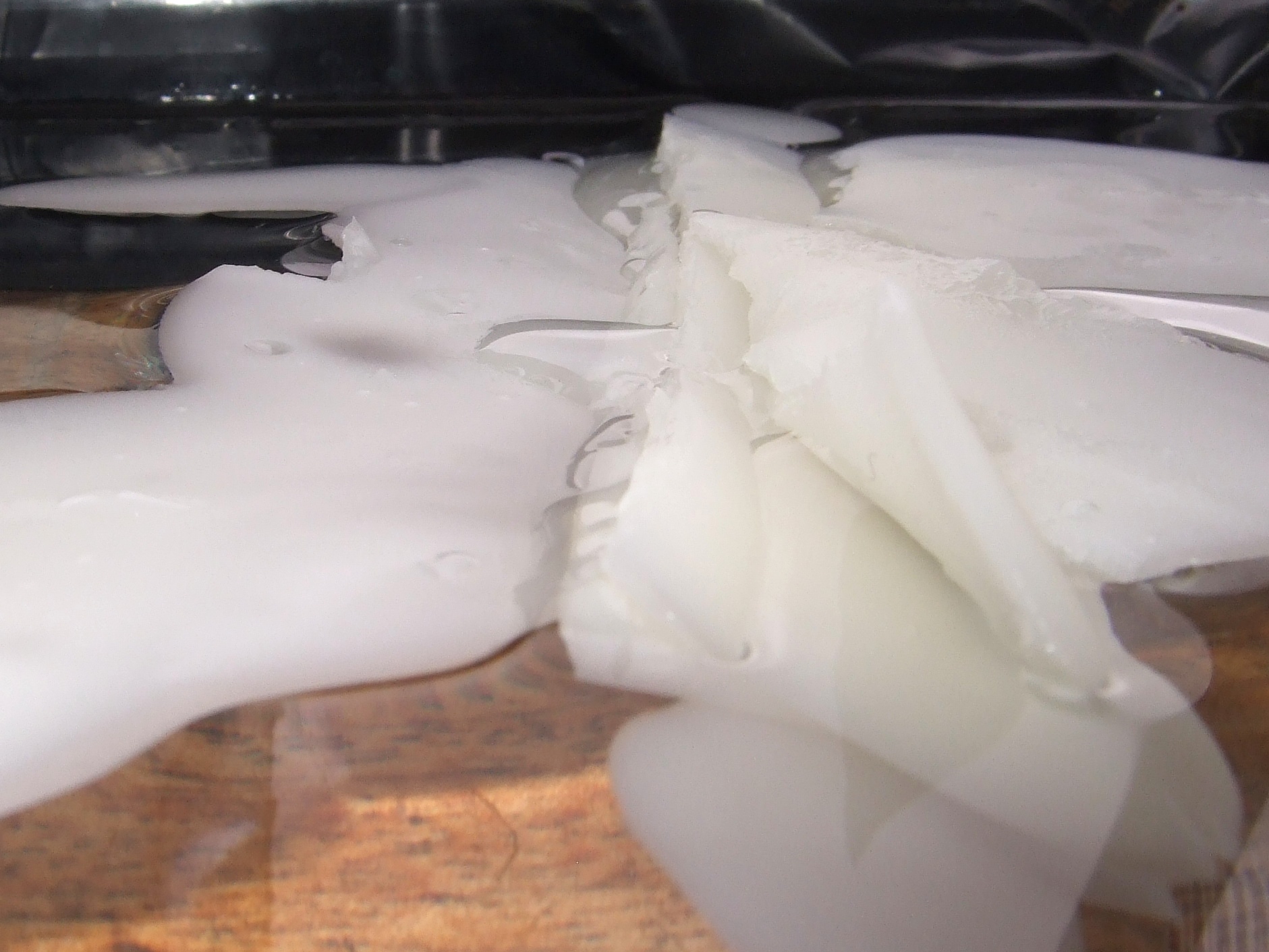 | 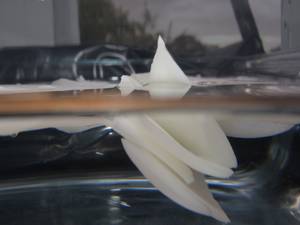 |
|---|---|
| There are some mountains on the surface. | However the roots of the mountains are much larger than the mountains on the surface. |
Explanation
Lard is slightly less dense than water so it floats on the surface, but only just. This means that when you crush the two plates together they shorten. Because lard is only slightly less dense than water it sinks so that most of the mountains that are formed are under water.
 | The two plates of lard are pushed together. |
 | The plates move together and they get thicker. The thicker areas are heavier and the upthrust from the water is not enough to support it. |
 | So they sink until the upthrust supports the plate, creating roots. |
Real mountains are made in a similar way. The hard surface we walk on is called the crust and is sitting on the upper mantle. There are two main types of crust. The oceanic crust which is thinner and about as dense as the mantle, sits under the oceans. Tthe continental crust is slightly less dense than the mantle. So this floats on the upper mantle.
The density difference is small so where mountains are formed they have much deeper roots than their height.
 | 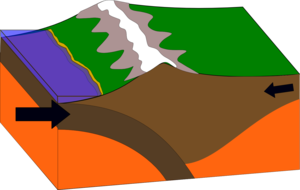 |
| When two continental plates collide they thicken and form mountains with deep roots. | If oceanic plates collide with continental plates the oceanic plate sinks underneath, it subducts under the continental plate crushing it and thickening it. |
A related effect explains why Scotland is slowly rising at a few mm a year and England is sinking
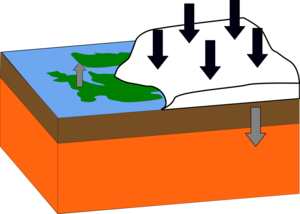 | At the start of the last ice age a huge ice sheet formed over Scotland and northern England. This applied a huge weight on the crust. |
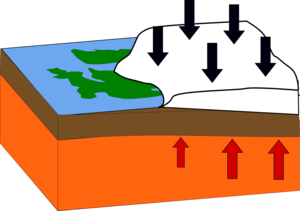 | This pushed Scotland downwards by many metres. Until the upthrust from the mantle balanced the weight out. |
 | Then the ice melted removing the weight, Scotland is still rising as the mantle flows slowly to come back into equilibrium. |











Comments
Add a comment